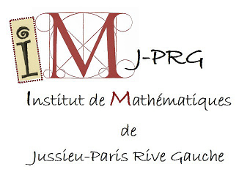| Résume | In this talk, I present a ring isomorphism between $t$-deformed Grothendieck rings (=quantum Grothendieck rings) of certain monoidal subcategories $\mathcal{C}_{\mathscr{Q},\mathrm{B}_n}$ and $\mathcal{C}_{\mathcal{Q}, \mathrm{A}_{2n-1}}$ of finite-dimensional representations of quantum affine algebras of types $\mathrm{B}_n^{(1)}$ and $\mathrm{A}_{2n-1}^{(1)}$, respectively. This isomorphism is specialized at $t = 1$ to the isomorphism between usual Grothendieck rings obtained recently by Kashiwara, Kim and Oh through the other methods. In the early 2000s, the quantum Grothendieck rings were introduced by Nakajima and Varagnolo-Vasserot in the simply-laced case through a geometric method, and by Hernandez in the arbitrary untwisted case through an algebraic method. In the simply-laced case, Nakajima established a remarkable Kazhdan-Lusztig algorithm to compute a $q$-character of simple modules by this $t$-deformation. This Kazhdan-Lusztig algorithm is known to provide a candidate of $t$-deformation of $q$-characters of simple modules also in the non simply-laced case, however, it has been open whether it is a true $t$-deformation. Our isomorphism gives an affirmative answer to this kind of question for $\mathcal{C}_{\mathscr{Q},\mathrm{B}_n}$. Our proof relies in part on the quantum cluster algebra structures. This talk is based on a joint work with David Hernandez. |

